
U.S.A. - Centenary of the Telegraph (Scott # 924)
Items of Significance |
|
Last updated
August 8, 2010 |
U.S.A. - Centenary of the Telegraph
Most of the Bahá'í friends know the story about Samuel Morse and the invention of the Telegraph. No one really knows why he said "What Hath God Wrought." He truly believed that the telegraph would change the world, making it "smaller" making communication so much easier that it would help create world peace. Not many people believed him, in fact, they thought he was a little crazy. Bahá'ís know that the date of the opening of the first telegraph line, on May 24th 1844 practically coincided with the Declaration of the Bab in Shiraz. How fitting that this stamp was issued one hundred years later, when Bahá'ís were also celebrating a Holy Year. Yep, I think it goes in our collection, too.
Candace Hill
Judith Poltz offers the following commentary on the above statement:
However, we do in fact know how Samuel Morse chose this phrase as the first telegraph message. I was taught in grade school that Mr. Morse gave the privilege of selecting the text of the first telegraph message to a certain woman, who chose this verse from the Bible. I was not able to remember her name, but I found a few websites which do give her name: Annie Ellsworth. The Bible verse is from the book, Numbers, Chapter XXIII, verse 23. At this website, you will find a brief account of how this Bible verse was selected: http://inventors.about.com/od/tstartinventions/a/telegraph.htm

U.S.A. - Centenary of the Telegraph (Scott # 924)
There are a number of different covers featuring this stamp. The following are some of these covers:
 |
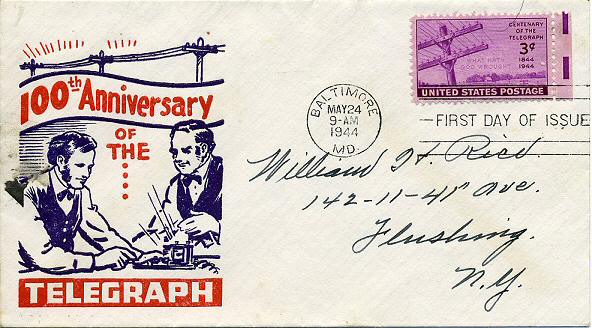 |
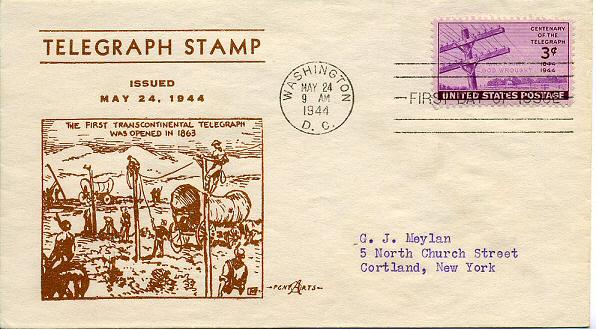 |
 |
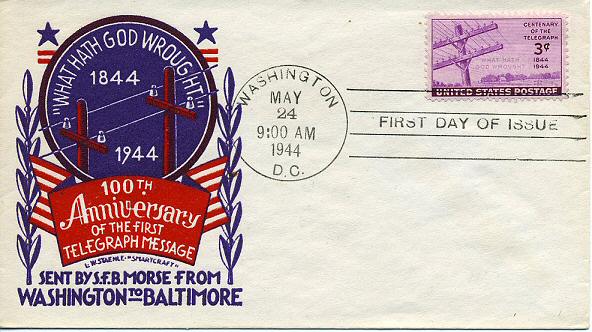 |
 |
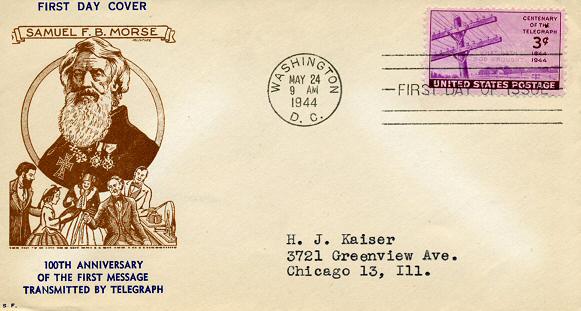 |
 |
 |
 |
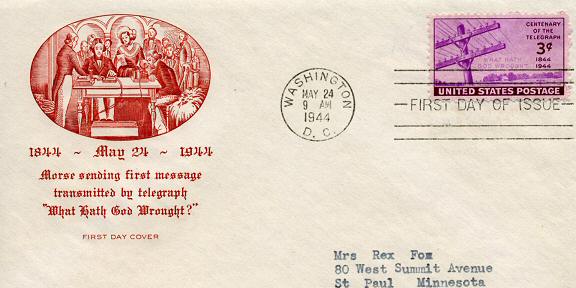 |
|
A full sheet of the stamp:

Iran - Zil-ul Sultan
Zil-ul Sultan was the older brother of Mozaffareddin Shah and the Governor of Esfahan province. Baha’is & Babis suffered a great deal due to his efforts. Here an expert Vignettes from the Life of Abdu'l-Baha by Annamarie Honnold (Page 51-52):
In 1911 the Master spent a few quiet days in the French Alps, presumably to rest, before continuing to London. Here took place a remarkable encounter which illustrates the universality of His love, even towards those whose hearts ran hostile to Him and to His Father’s Cause. Juliet Thompson tells us the following about this occasion which she herself witnessed: “Monstrously sinned against, too great was He to claim the right to forgive. In His almost off-hand brushing aside of a cruelty, in the ineffable sweetness with which He ignored it, it was as though He said: Forgiveness belongs only to God.
‘An example of this was His memorable meeting with the royal prince, Zillah Sultan, brother of the Shah of Persia, Muhammad Ali Shah. Not alone Abdu’l-Baha, but a great number of His followers, band after band of Baha’i martyrs, had suffered worse than death at the hands of these two princes. When the downfall of the Shah, with that of the Sultan of Turkey, set Abdu’l-Baha at liberty, Abdu’l-Baha, beginning His journey through Europe, went first to Thonon-les-Bains, on the Lake of Geneva. The exiled Shah was then somewhere in Europe; Zillah-Sultan, also in exile with his two sons, had fled to Geneva. Thus Abdu’l-Baha, the exonerated and free, and Zillah Sultan, the fugitive, were almost within a stone’s throw of each other.
‘In the suite of Abdu’l-Baha was a distinguished European who had visited Persia and there met Zillah Sultan. One day when the European was standing on the balustraded terrace of the hotel in Thonon and Abdu’l-Baha was pacing to and fro at a little distance, Zillah Sultan approached the terrace. Abdu’l-Baha was wearing, as always, the turban, the long white belted robe and long aba of Persia. His hair, according to the ancient custom of the Persian nobility, flowed to His shoulders. Zillah Sultan, after greeting the European, immediately asked:
‘“Who is that Persian nobleman?”’
‘“Abdu’l-Baha.”
‘“Take me to Him.”
‘In describing the scene later, the European said: “If you could have heard the wretch mumbling his miserable excuses!” But Abdu’l-Baha took the prince in His arms. ”All that is of the past,” He answered, “Never think of it again. Send your two sons to see me. I want to meet your sons.”
‘They came, one at a time. Each spent a day with the Master. The first, though an immature boy, nevertheless showed Him great deference. The second, older and more sensitive, left the room of Abdu’l-Baha, where he had been received alone, weeping uncontrollably. “If only I could be born again,” he said, “into any other family than mine.”
‘For not only had many Baha’is been martyred during his uncle’s reign (upwards of a hundred by his father’s instigation), and the life of Abdu’l-Baha threatened again and again, but his grandfather, Nasiri’d-Din Shah, had ordered the execution of the Bab, as well as the torture and death of thousands of Babis.
‘The young prince was “born again” – a Baha’i.’
To the best of my knowledge there was only one Zil-ul Sultan, which literally means the shadow of shah, in the Iran’s history. Zil-ul Sultan and his office used the above seals on all official correspondence.

These seals can be found both with and without
embossing, as shown above.
By the way if you haven't read Vignettes from the Life of Abdu'l-Baha, it
is a wonderful book. I highly recommend it.
Thanks to the following information from Edan Golshani, Zil-ul Sultan was Muzaffari'd-Din Mirza Shah's brother not Muhammad Ali Shah's, as described in the book. Muhammad Ali Shah was Muzaffari'd-Din Mirza Shah's father.
I have been working some time on an electronic family tree for the Holy Families of the Bab and Baha'u'llah. I have found connections to the Qajar dynasty, so their family has become part of the tree too. It appears there is some confusion with the excerpt you have on your page. The Zillu's-Sultan (Mas'ud Mirza) was the eldest surviving son of Nasiri'd-Din Shah. He was not heir to the throne because his mother was not a Qajar. So Zillu's-Sultan was the brother of Muzaffari'd-Din Mirza Shah who then was the father of Muhammad `Ali Shah. Muhammad Ali Shah became shah after his father passed away in 1907. So, the Zillu's-Sultan would have been the uncle of the Shah (Muhammad Ali) at the time of his meeting with `Abdu'l-Baha. I could not find much information about his children except that he had a daughter who married Sultan Abdul Hamid II (possibly in an attempt for him to get power). I actually just found out about one of his sons, Husayn Mirza (Jalalu'd-Dawlih) who met with `Abdu'l-Baha. And I guess he had another son that I have not found anything about. Anyways, that is some info about him.... as far as I can tell, he was the only Zillu's-Sultan (at least in modern times).
Eden Golshani
Thanks also to Mr. Mehrdad Sardi for offering the following correction:
Zill-ol-Soltan was the older brother of Mozaffareddin Shah. Since his mother was a commoner, therefore he did not ascend to the throne after the death of Nassereddin Shah Qajar.
By the way Mr. Sadri is one of the greatest authorities on Iranian stamps and I am a great admirer of him. He operates the Persiphila web site at www.persi.com. If you are interested in Iranian stamps, I highly recommend you visit the web site. It is a great source of authoritative information on Iranian stamps.
Iran - Násiri'd-Dín Sháh
"Násiri'd-Dín Sháh, a selfish, capricious, imperious monarch, succeeded to the throne, and, for half a century, was destined to remain the sole arbiter of the fortunes of his hapless country. A disastrous obscurantism, a chaotic administration in the provinces, the disorganization of the finances of the realm, the intrigues, the vindictiveness, and profligacy of the pampered and greedy courtiers, who buzzed and swarmed round his throne, his own despotism which, but for the restraining fear of European public opinion and the desire to be thought well of in the capitals of the West, would have been more cruel and savage, were the distinguishing features of the bloody reign of one who styled himself "Footpath of Heaven," and "Asylum of the Universe." A triple darkness of chaos, bankruptcy and oppression enveloped the country. His own assassination was the first portent of the revolution which was to restrict the prerogatives of his son and successor, depose the last two monarchs of the House of Qájár, and extinguish their dynasty. On the eve of his jubilee, which was to inaugurate a new era, and the celebration of which had been elaborately prepared, he fell, in the shrine of Sháh `Abdu'l-`Azím, a victim to an assassin's pistol, his dead body driven back to his capitol, propped up in the royal carriage in front of his Grand Vizir, in order to defer the news of his murder."
"Násiri'd-Dín Sháh, a selfish, capricious, imperious monarch, succeeded to the throne, and, for half a century, was destined to remain the sole arbiter of the fortunes of his hapless country. A disastrous obscurantism, a chaotic administration in the provinces, the disorganization of the finances of the realm, the intrigues, the vindictiveness, and profligacy of the pampered and greedy courtiers, who buzzed and swarmed round his throne, his own despotism which, but for the restraining fear of European public opinion and the desire to be thought well of in the capitals of the West, would have been more cruel and savage, were the distinguishing features of the bloody reign of one who styled himself "Footpath of Heaven," and "Asylum of the Universe." A triple darkness of chaos, bankruptcy and oppression enveloped the country. His own assassination was the first portent of the revolution which was to restrict the prerogatives of his son and successor, depose the last two monarchs of the House of Qájár, and extinguish their dynasty. On the eve of his jubilee, which was to inaugurate a new era, and the celebration of which had been elaborately prepared, he fell, in the shrine of Sháh `Abdu'l-`Azím, a victim to an assassin's pistol, his dead body driven back to his capitol, propped up in the royal carriage in front of his Grand Vizir, in order to defer the news of his murder." Shoghi Effendi, The Promised Day is Come
The first postal stamps in Iran were issued during the reign of Násiri'd-Dín Shah in 1868. The story behind it is very interesting and shows appalling state of affairs in those days. The chaos at the time explains the high price and poor quality of the early issues of the Persian stamps, which are known as the Lion and Sun issues of Iran. There are numerous forgeries of these stamps around. The quality was very poor and there is a variety of colours and papers used in printing the stamps.
Bahá'u'lláh arrived to the Holy Land on Aug. 31, 1868 after being exiled by Násiri'd-Dín Shah.

The first official set issued in 1868
The very first portrait stamps were issued in 1876 (Scott# 27-30). These are not very expensive stamps. The quality is more consistence.

Násiri'd-Dín Shah's First Portrait Stamps
Issued in 1876
Second portrait set was issued in 1879-80 (Scott# 41-46)
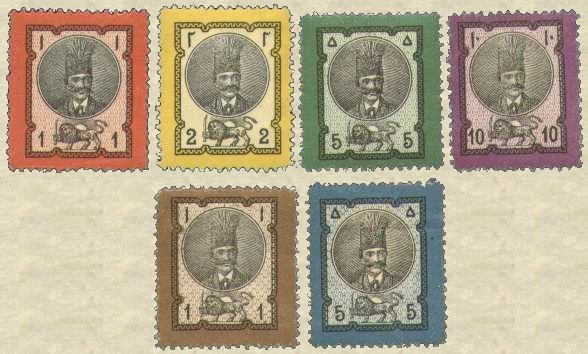
Násiri'd-Dín Shah's Second Portrait Stamps
Issued in 1879-80

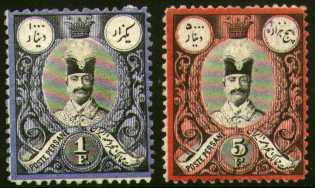

Scott# 54-59 Issued in 1882-84
Other stamps featuring Násiri'd-Dín Shah are Scott 63-65, 77-78, 88-89 and 94-100. Almost all of these have forgeries. So be careful when buying these stamps.
I have been working some time on an electronic family tree for the Holy Families of the Bab and Baha'u'llah. I have found connections to the Qajar dynasty, so their family has become part of the tree too.
Eden Golshani
Images were obtained from Persiphilia (www.persi.com).
Iran - Amír-Nizám, Mírzá Taqí Khán,
...the seventeen year old Násiri'd-Dín Mírzá ascended the throne, leaving the direction of affairs to the obdurate, the iron-hearted Amír-Nizám, Mírzá Taqí Khán, who, without consulting his fellow-ministers, decreed that immediate and condign punishment be inflicted on the hapless Bábís.
Shoghi Effendi, God Passes By...the arch villains who joined hands with the prime movers of so wicked a conspiracy were the two grand vizirs, Hájí Mírzá Aqásí, the idolized tutor of Muhammad Sháh, a vulgar, false-hearted and fickle-minded schemer, and the arbitrary, bloodthirsty, reckless Amír-Nizám, Mírzá Taqí Khán, the first of whom exiled the Báb to the mountain fastnesses of Ádhirbayján, and the latter decreed His death in Tabríz.
Shoghi Effendi, God Passes By
...the low-born and infamous Amír-Nizám, Mírzá Taqí Khán, the first year of whose short-lived ministry was stained with the ferocious onslaught against the defenders of the Fort of Tabarsí, who authorized and encouraged the execution of the Seven Martyrs of Tihrán, who unleashed the assault against Vahíd and his companions, who was directly responsible for the death-sentence of the Báb, and who precipitated the great upheaval of Zanján, he forfeited, through the unrelenting jealousy of his sovereign and the vindictiveness of court intrigue, all the honors he had enjoyed, and was treacherously put to death by the royal order, his veins being opened in the bath of the Palace of Fín, near Káshán. "Had the Amír-Nizám," Bahá'u'lláh is reported by Nabíl to have stated, "been aware of My true position, he would certainly have laid hold on Me. He exerted the utmost effort to discover the real situation, but was unsuccessful. God wished him to be ignorant of it."
Shoghi Effendi, God Passes By

Scott# 2208, Issues in 1986
Iran - Ark Ali Shah
I grew up in Tabriz. In the
centre of Tabriz there is a historic building called Ark-e Alishah. I believe it
is a few hundred years old and it used to be the main gate in the south of the
city.
When I was little we used to go to the top this building where there was the
remain of a small room with no ceiling and my parents used to say prayers. The
Bab was hold in that room overnight the first time He was in Tabriz before He
was sent to Maku.
 Scott# 2163 issued in 1984 |
 |
 |
The actual room is at the top right hand side of the building. The room is no longer accessible. There were scary stairs on the left side of the building going to top of the building, which were closed many years ago.
| Ark Mosque, Tabriz | ||
|
|
|
|
|
|
||
 |
||
| The following Information is from IranCarvan.com | ||
Israel - Akka
Baha'u'llah and some of his companions was exiled to the disease-ridden
fortress-prison of Akka, which was a remote little declining port city.
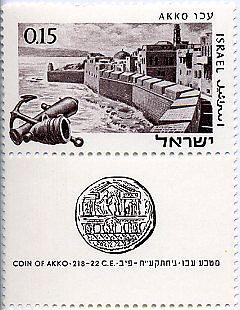 Israel 1967 (SG# 353) Is the Great Prison seen here? |
 |
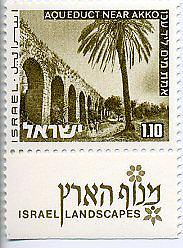 Aqua-duct Near Akka Baha'u'llah in one of His tablets asked the Governor to repair the Aqua-duct. |
 |
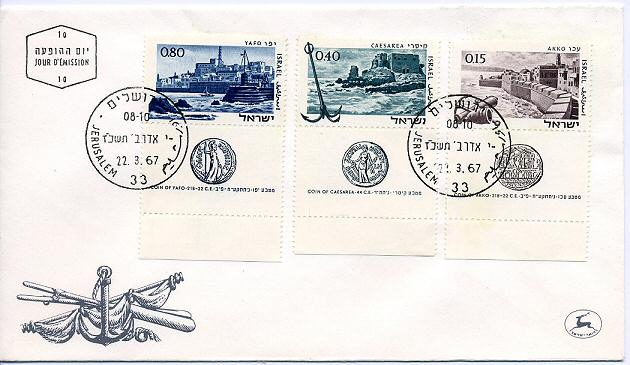 |
 The blue stamp shows the port of Haifa |
||
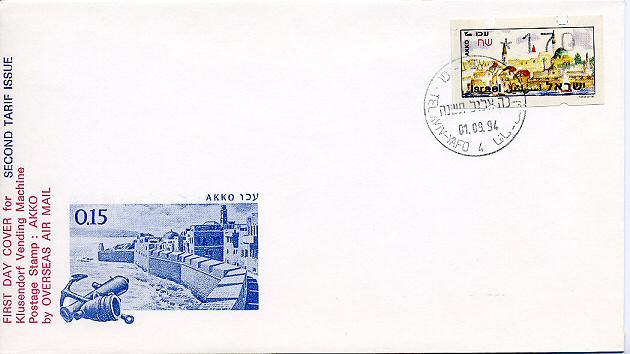 |
 |
||
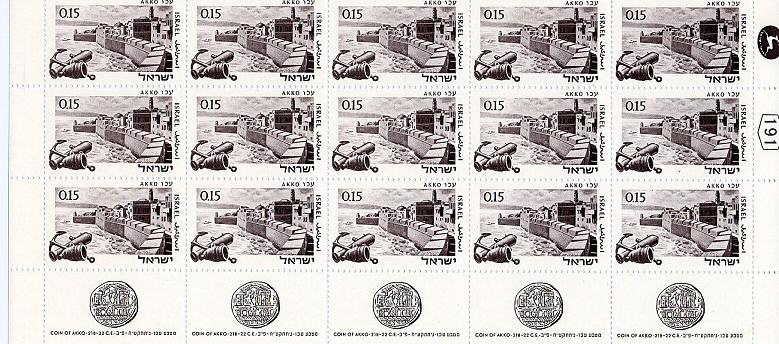 |
|||
 Israel, May 3, 2004 |
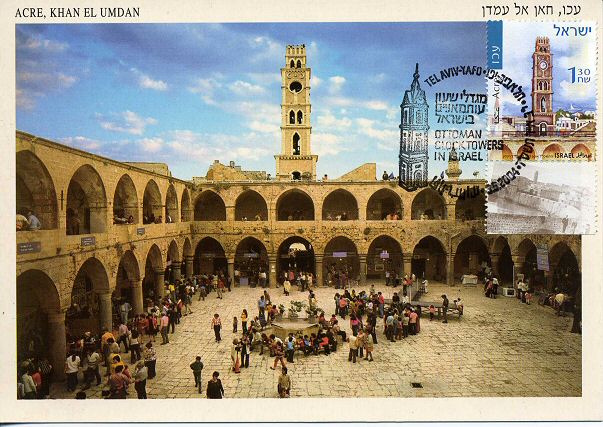 |
 Israel 1960 (SG# 184a) |
|
Images and information were kindly provided by Behzad Mirzaei & Sharaf Funk.
Turkey, Edirne (Adrianople), Selimiye Mosque
The Selimiye Mosque was built by the Sultan after he dreamed of the coming of the promised Qaim. Baha’u’llah commented that its purpose was fulfilled when he entered the mosque. It is also where Mirza Yahya challenged Baha’u’llah as the leader of the Babis, after which Baha’u’llah laid a harsh separation with his family.
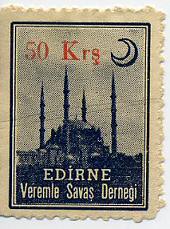 |
 |
 Selimiye Mosque - 1918 |
 Turkey FDC issued 1959 |
||
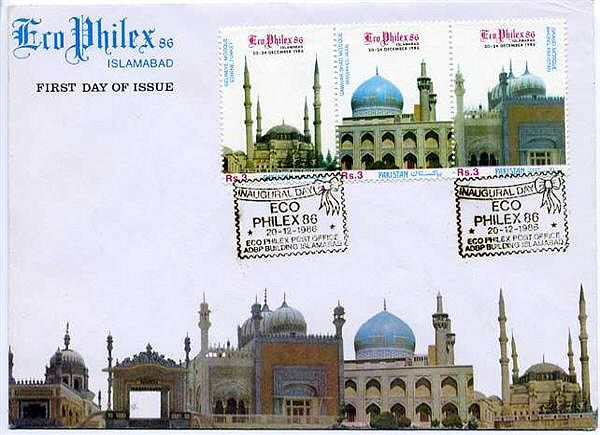 Pakistani FDC issued in 1986 Showing 3 Great Architectural Heritages: Selimiye Mosque, Edirne, Turkey Gawhar Shad Mosque, Mashhad, Iran Grand Mosque Bhong Rahim-Tar Khan, Pakistan |
||
Images and Information Courtesy of Sharaf Funk.
Falkland Islands - 150th Anniversary of British Settlement
In 1983 Falkland Islands released a set of 11 stamps commemorating the 150th anniversary of British Settlement. The pictorial work was produced by artist John 'Duffy' Sheridan who is a Bahá'í.

Images and information courtesy of Thelma Batchelor.
This page is maintained by Tooraj Enayati
Reproduction and distribution without
permission is prohibited.
Copyright © 2002-2010 Tooraj Enayati